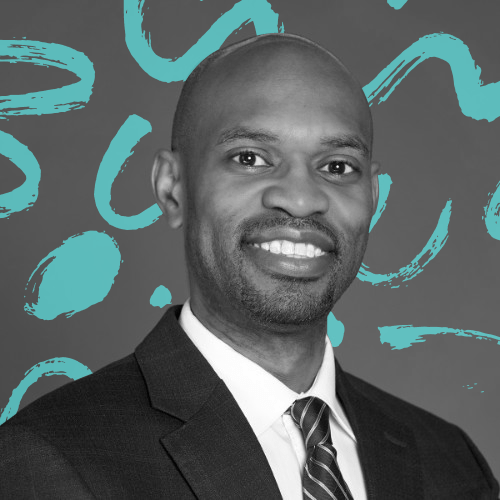

Focus and efficiency are the names of the game.
With 54% of business leaders predicting the worst economic downturn in 20 years, it’s clear that this is a vital moment to look to and learn from industry leaders.
What are they doing that makes them stand apart? What precautions are they taking for the coming years? And what can we borrow from their winning strategies?
Based on a recent 300-leader survey, those top winning strategies fall into four main categories:
- Playing offense with efficiency
- Investing in technology to consolidate, automate, and save resources
- Prioritizing employee engagement
- Planning for long-term customer retention
Based on those findings, we did some digging into CIOs leading the charge. They’ve got insights on these strategies, wins we can learn from, and careers we think everyone should be paying attention to.
Here are seven of those powerhouse CIOs—and some relevant thoughts from them about these vital strategic priorities:
What’s in a Title?
Similarly to Forbes and their top CIO list, we’ve taken some liberties with who we’re calling CIOs. Instead of titles, we’re more concerned with roles and responsibilities. This is why some of the people on the below list have multiple titles or don’t hold the title of CIO at all.
We’re also choosing to highlight—not rank. These are people doing standout work, but that doesn’t mean they are the only people doing standout work.
Want some inspiration from the best PMOs? Check out our list of the top PMOs of 2023!
Playing Offense With Efficiency
Efficiency is critical for CIOs and similar roles as they manage complex technology environments and big budgets. But how are leaders ensuring IT operations and projects are efficient? And how are they optimizing costs and resources?
Let’s take a look at a few in our list who are answering those tough questions:
John Kish

Company: Equity Trust Company
Title: CIO
A leader in the self-directed account industry, this spring Equity Trust named John Kish as their Chief Information Officer. With over 20 years of experience across industries such as automotive and medical—and the strategic mindset that comes with that wealth of experience—we’ve got our eye on John’s commitment to innovation on both the business and technology side of things.
In a recent interview, he spoke on a point that we believe is key for those focused on efficiency. John explained his specific outlook on his efficiency strategy by saying:
Azunna Anyanwu

Company: Aprio
Title: CIO
With a 20+ year career in the industry, Azunna Anyanwu has focused on delivering solutions and advising executives and corporate boards on technology. Now, he’s the strategic leader behind IT operations, cybersecurity, and infrastructure at Aprio—a business advisory and accounting firm with 20 locations, nearly 2,000 team members, and 50+ countries served.
In 2022, he was the AOTMP IT Management Professional of the Year.
On the efficiency and technology side of things, Azunna’s assessment of what CIOs are working with might ring particularly true. As he says in a recent LinkedIn article:
In other words: Just as our recent report found, consolidation, automation, and saving resources via the right technology are paramount challenges to tackle when taking on a new project or coming into a new CIO role.
Investing in Technology
To maintain a competitive edge, leaders in the technology space have to continually invest in technology to drive business value. Whether it’s driving growth, future-proofing, mitigating risks, or improving efficiency, prioritizing technology is top of mind for these leaders.
Nancy Avila

Company: McKesson Corporation
Title: Executive VP, CIO, and CTO
Nancy Avila is another powerhouse with more than two decades of experience to draw from as she leads a team responsible for the technology that keeps McKesson’s vital healthcare services running smoothly. At the height of the COVID crisis, it was McKesson’s e-commerce platform that U.S. regulators chose to distribute vaccines to pharmacies across the states.
And it was Nancy’s team that scaled distribution by 1500% in just 90 days.
We love what she has to say about how investing in technology impacts very real outcomes for very real people on the receiving end of our services and products. From a recent interview:
Prioritizing Employee Engagement
Employee engagement might not always be first to mind with business technology, but it can be one of the most crucial aspects of a thriving organization. Many technology leaders look to collaboration tools, devices, and training software to boost workforce productivity and give employees the right tech to enhance their work.
Here are a few leaders investing in employee engagement through technology:
Erika Carrara

Company: Wabtec Corporation (Fortune 300)
Title: Vice President and Chief Information Security Officer (CISO)
Pittsburgh Tech Council’s CISO of the year Erika Carrara is a cybersecurity, compliance, privacy, and digital systemic risk expert with over 20 years of experience under her belt. She’s currently CISO and VP at Wabtec—a Fortune 500 company with a presence in 53 countries.
Erika is also a Native American, veteran, the Executive Sponsor of Women of Wabtec, and a strong advocate for gender diversity and other DEI efforts.
She’s also a great example of understanding the role employee engagement and education play in keeping companies and systems secure. As she said recently in a Digital Directors Network interview:
Lori Beer

Company: JPMorgan Chase
Title: Global CIO
This powerhouse CIO is head of JPMorgan Chase & Co.—a leading global financial services firm with $2.6 trillion in assets. Lori Beer appears on many industry lists, including Most Influential Women in U.S. Finance and Most Powerful Women in Banking.
Lori makes those lists for many different reasons—specifically her industry prominence, her management of a $15 billion budget, and her commitment to raising other women in STEM. With 57,000 employees on her tech team and a stellar track record, she’s also a great source of inspiration for those who want to improve employee engagement.
We are particularly struck by her focus on clear, strategic employee communication that centers company strategy. As she said in a recent interview:
This focus on engaged, informed employees also feeds into success with the customer retention and technology pieces of our strategic puzzle.
“That translates into…how we deliver engaging customer experiences [and] how we make sure we’re modernizing our applications, infrastructure, and data,” Beer added.
Planning for Long-Term Customer Retention
Customer-facing technology investments like mobility, personalization, and omnichannel improve satisfaction and loyalty. That’s why you’ll see CIOs speak to the power of technology to help keep their customers longer.
Dr. Chandragupta Gudena

Company: PBMares LLP
Title: CIO
With a rich background in consulting, advisory, and operational roles, Dr. Chandragupta Gudena stepped into his current role in 2021 and has been developing and implementing FinTech strategy and technological transformation ever since.
In a recent chat with ClickUp, Dr. Gudena explained how digital transformation has become a major focus for many CIOs. He added there’s a growing need to reduce technology debt, manage the abundance of created data, and avoid disruptions to standard business practices across the org.
Arthur Hu

Company: Lenovo
Title: SVP, Global CIO, and Services and Solutions Group CTO
With 14+ years at Lenovo, Arthur Hu has built a strong career leading global IT teams across the value chain and earning big wins for the company along the way. Before Lenovo, this industry heavy hitter spent eight years at McKinsey after graduating from Stanford with a B.S. and then M.S. in Computer Science.
But it’s not just the incredible companies and universities on his resume that led us to include him on this year’s list. It’s the insights he’s been sharing that help frame how CIOs should be thinking about the end customer.
Arthur added context to this idea in a recent interview for CIO Magazine.
In the same interview, Arthur adds that enterprise organizations are moving away from a “delivery” process and moving closer to “alignment with outcomes,” which is why customer experience is such a critical factor in the tech world.
“It is no longer enough to manufacture and ship a piece of hardware,” Hu added. “You must provide value by aligning with the customers’ ultimate business goals. However, you can only pivot to a customer-outcomes mindset if you have an intimate understanding of customer needs and the context in which your technology is being used, which is really where CIOs can play an integral role.”
Go Forth and Learn From the Best
If you’re trying to prioritize the metrics above (and with 300 leaders saying they’re the key to success in the coming year, we imagine you might be), it’s time to follow and dig into the insights of the CIOs above.
It’s also a great time to revisit how (or if) your strategy incorporates the values of playing offense with efficiency; investing in technology to consolidate, automate, and save resources; prioritizing employee engagement; and planning for long-term customer retention.
And if you haven’t dug into our 300-person survey, you’ll find a deeper look here.


